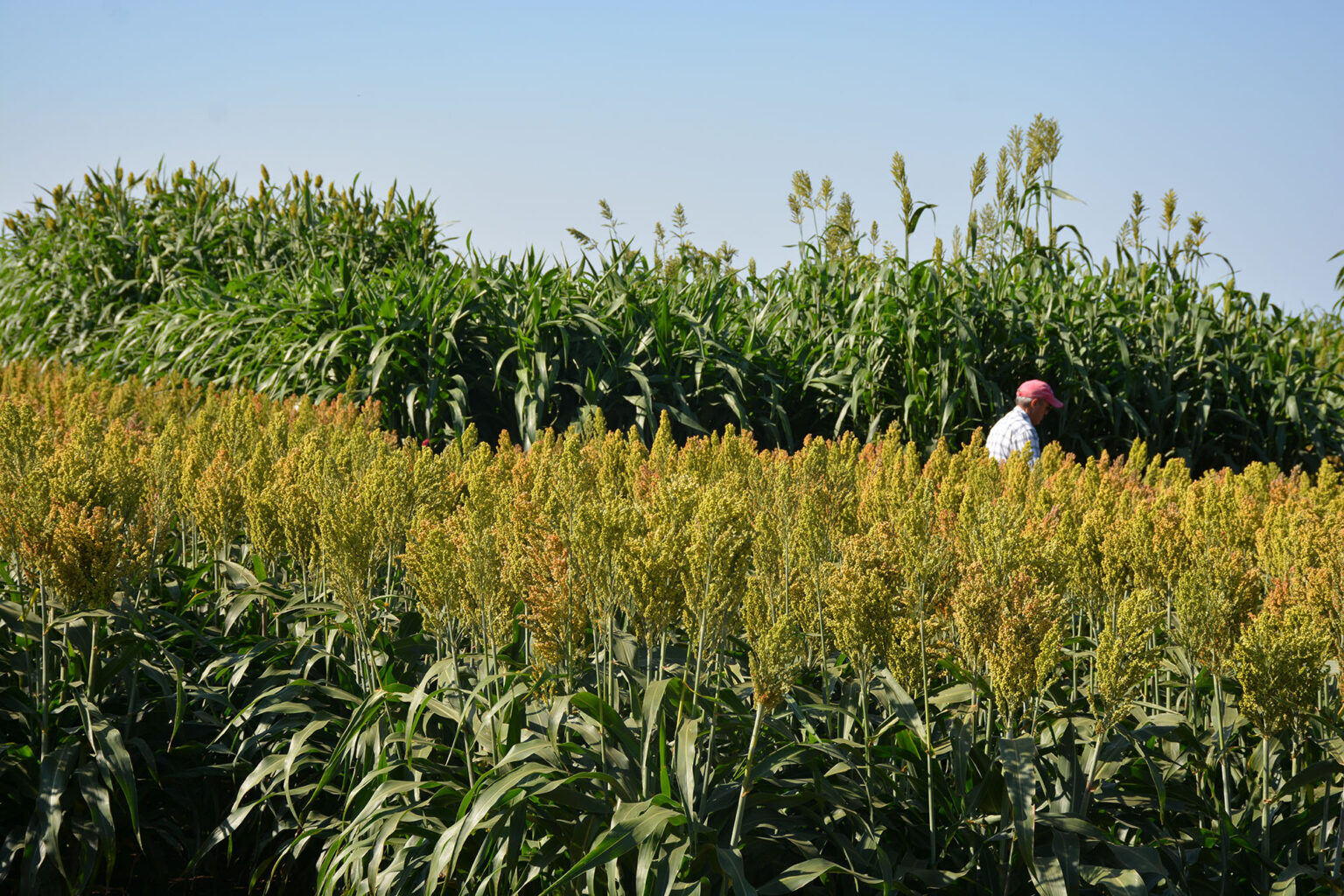“What forage sorghum hybrid should I pick?”
That’s a question Jourdan Bell, Ph.D., Texas A&M AgriLife Extension Service agronomist and associate professor in the Texas A&M College of Agriculture and Life Sciences Department of Soil and Crop Sciences, Amarillo, gets multiple times per week this time of year.
Because of variability in forage sorghum hybrids, producers do have a lot of questions, Bell said, but at the same time, the variability provides them with options to fit their production systems, yield goal and end-user’s nutritional goals.
“I have compiled six years of the forage sorghum silage data and included hybrids that have been tested anywhere from two to six years,” she said. “There are many good hybrids on the market. It is really challenging to narrow down one variety for high yield and high digestibility, because there are many considerations for production.”
Bell said the Texas High Plains, is just entering sorghum planting season, so there is still time to coordinate planting windows with hybrid maturity class and harvest schedules to optimize both yields and forage nutritional quality.
Narrowing down the forage sorghum hybrid list
Producers need to know the following production considerations to determine what variety suits their production system best:
— Planting and harvest windows.
— Water availability.
— Hybrid sugarcane aphid tolerance.
— Yield vs. quality.
“Ideally we want high quality, high yielding hybrids,” Bell said. “Our AgriLife Extension hybrid trials provide producers an indication about how hybrids mature in a Southern Great Plains environment. We include days to half-bloom, which is a very good indication of maturity.”
She explained half-bloom indicates the stage when more than 50% of the plants are blooming. Depending on the hybrid and environmental conditions, harvest is 20 to 40 days after half-bloom. Although the maturity class is advertised for all hybrids, sorghum is photoperiod sensitive, so development is impacted by day length. Maturity also can be impacted by heat and water stress.
“It is very helpful to evaluate regional data to understand how the hybrids perform in the environment they will be grown,” Bell said. “In our trials, we usually see that the days to half-bloom vary no more than 10 days for hybrids that we have evaluated for several years, but this does not always correlate with the advertised maturity because the maturity may have been determined under different environmental conditions.”
The trial data also includes the harvest date and moisture at harvest.
“We harvest at soft-dough, but some hybrids do not dry down as quickly in high-moisture environments or under irrigation, so it is important that producers consider late-season irrigation timing,” Bell said. “Considering the days from planting to half-bloom can help producers manage their planting window and coordinate harvest with custom silage choppers to ensure that the forage is harvested at a time to optimize both forage yield and nutritional quality.”
Irrigation and harvest decisions
Producers who are dependent on limited irrigation supplies often share sorghum acres with corn, so an early maturing hybrid gives them an option to plant later and harvest sooner, Bell said.
“It’s important to know that these hybrids are very fast and will not compensate for in-season water stress later in the season like a later-maturing hybrids,” she said. “However, because they are early, they will usually dry down sooner and can be chopped before corn silage to preserve forage quality.
“Later-maturing hybrids may not reach half-bloom until about 90-days after planting, so they need to be swathed if trying to harvest sooner. This is very important to preserve quality, but it is also an additional harvest expense. However, later maturing hybrids can provide flexibility for a later harvest date if there is enough water and nutrients to sustain the forage.”
Hybrids harvested closer to the grain physiological maturity may be less desirable, Bell said. End-users sometimes comment that forage sorghum harvested after the grain has reached physiological maturity may have a reduced feed value because the grain can be harder to process. This can be prevented by considering the forage maturity class, the planting date and harvest window.
Producers also ask about sugarcane aphids, which are now called the sorghum aphid, she said. There are newer forage sorghum hybrids on the market with sugarcane aphid/sorghum aphid tolerance.
“It is important that producers continue to scout if they use a tolerant hybrid because there are different levels of tolerance,” Bell said. “We do not have data evaluating differences in tolerance between hybrids.”
Brown midrib and male-sterile sorghum hybrids
Producers also ask if they should only consider brown midrib, BMR, hybrids. Although BMR hybrids show improved digestibility across broad averages, this is not always the case for individual hybrids.
“There are non-BMR hybrids that perform better than BMR hybrids and vice versa, so producers need to visit with their seedsmen and evaluate regional hybrid trials to evaluate hybrid performance in a side-by-side comparison,” Bell said.
“Producers are also inquiring about male-sterile sorghum hybrids,” she said. “These hybrids maintain quality longer because nutrients are not translocated to developing grain, but unlike photoperiod sensitive hybrids they increase in dry matter because they head earlier in the season.”
However, Bell warned that male sterile hybrids will develop grain if not harvested by heading and if planted close to another sorghum field. Although sorghum is considered self-pollinating, pollen from a neighboring field can travel in a windy environment.
“In our sorghum silage trial, we have not isolated the male-sterile hybrids because of logistics, but we will bag male-sterile heads this year to provide a more accurate male-sterile dataset,” she said. “In past years, there has not been as much interest in male-sterile yields without the grain because the general interest was primarily tonnage.”



